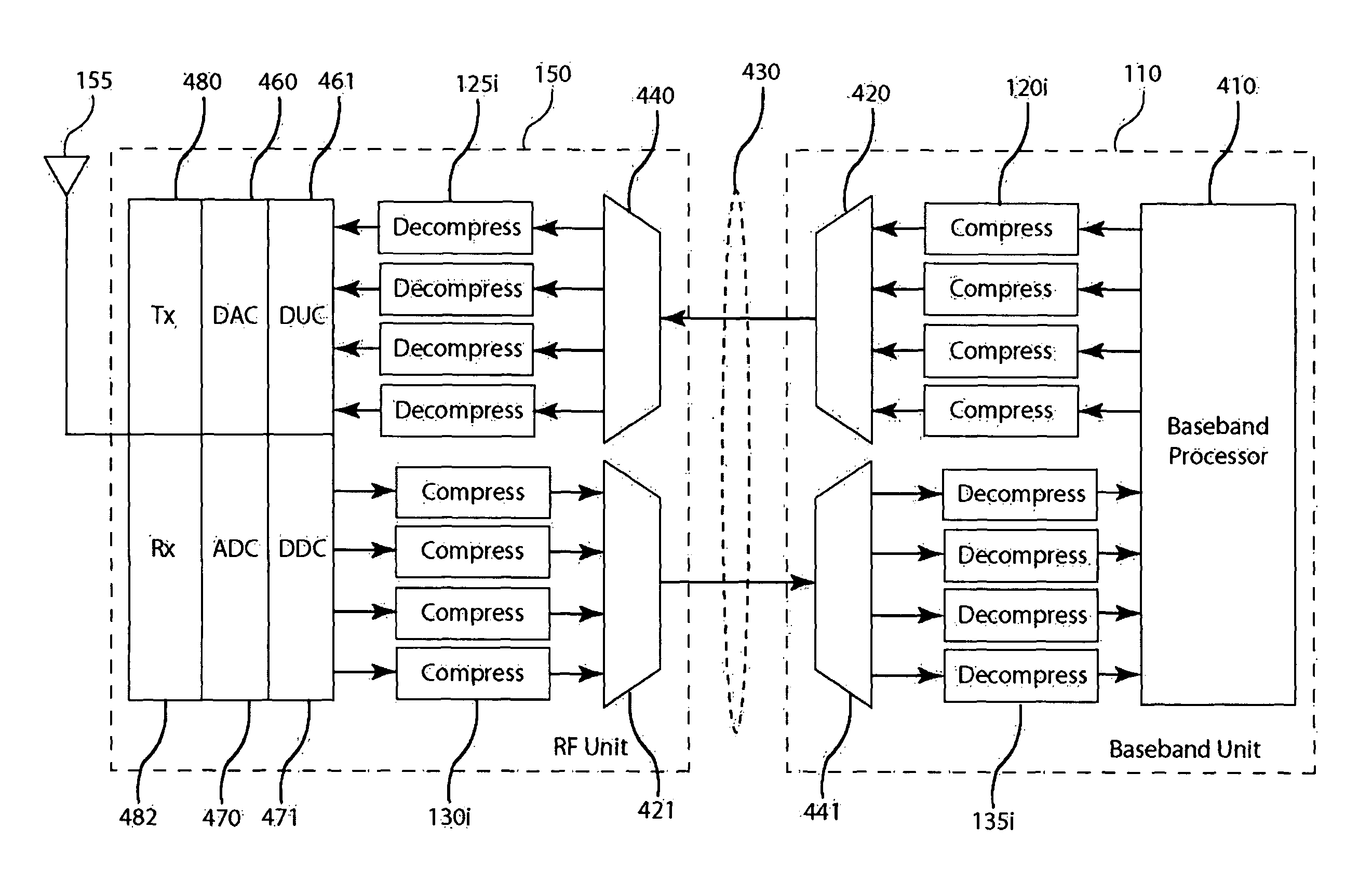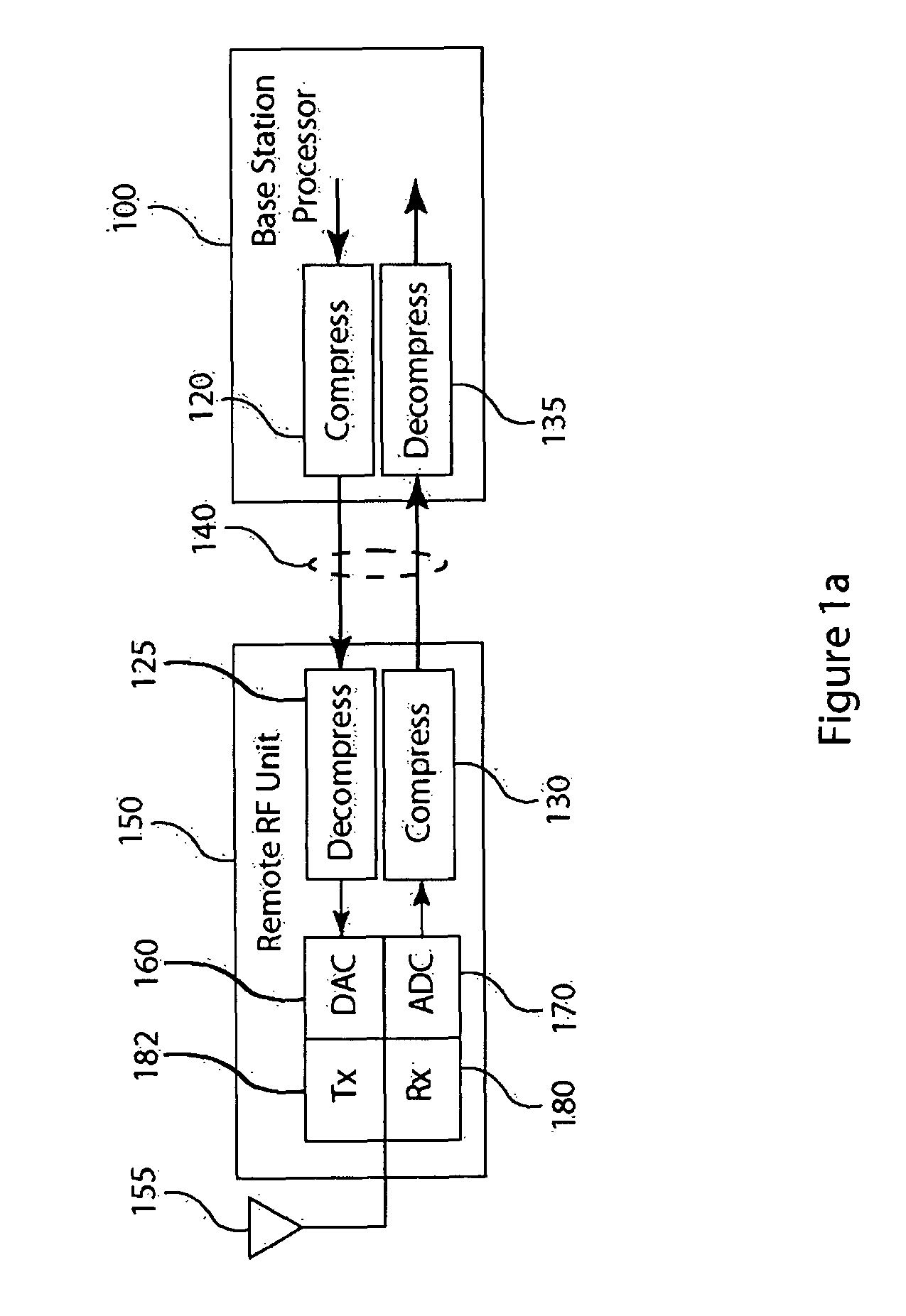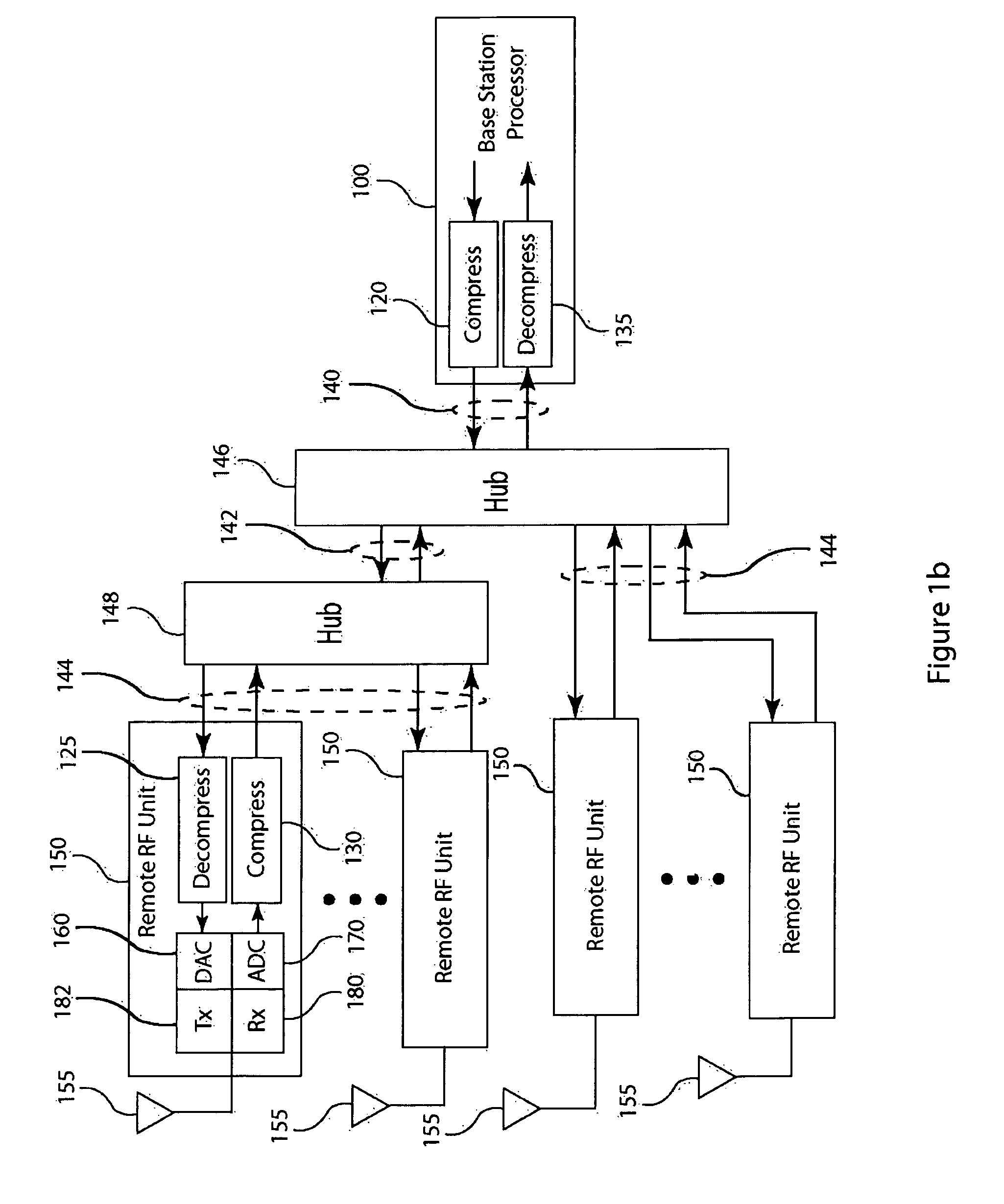Compression of signals in base transceiver systems
a transceiver system and signal compression technology, applied in the field of compression and decompression of signals in a transceiver system, can solve the problems of reducing the number or requiring expensive hardware upgrades to the transceiver system, and modular designs that may not necessarily comply with cpri or obsai. , to achieve the effect of increasing the data transfer capacity of serial data links
- Summary
- Abstract
- Description
- Claims
- Application Information
AI Technical Summary
Benefits of technology
Problems solved by technology
Method used
Image
Examples
Embodiment Construction
[0057]The following describes how compression and decompression are incorporated into base transceiver systems in accordance with the present invention. Example architectures include compression and decompression in a general base station, OBSAI or CPRI base stations and distributed antenna systems. The preferred methods for compression and decompression applied to the signal samples processed by the transceiver systems are then described.
[0058]FIG. 1a is a block diagram of a general base station architecture that incorporates compression and decompression in accordance with the present invention. The BTS architecture includes the base station processor 100 connected by one or more serial data links 140 to a RF unit 150. This general architecture can be used for any air interface standard employed by wireless communication network, including GSM / EDGE, CDMA based modulation formats, OFDM based modulation formats such as WiMax and other signal modulation formats that may evolve. The r...
PUM
 Login to View More
Login to View More Abstract
Description
Claims
Application Information
 Login to View More
Login to View More - R&D
- Intellectual Property
- Life Sciences
- Materials
- Tech Scout
- Unparalleled Data Quality
- Higher Quality Content
- 60% Fewer Hallucinations
Browse by: Latest US Patents, China's latest patents, Technical Efficacy Thesaurus, Application Domain, Technology Topic, Popular Technical Reports.
© 2025 PatSnap. All rights reserved.Legal|Privacy policy|Modern Slavery Act Transparency Statement|Sitemap|About US| Contact US: help@patsnap.com



